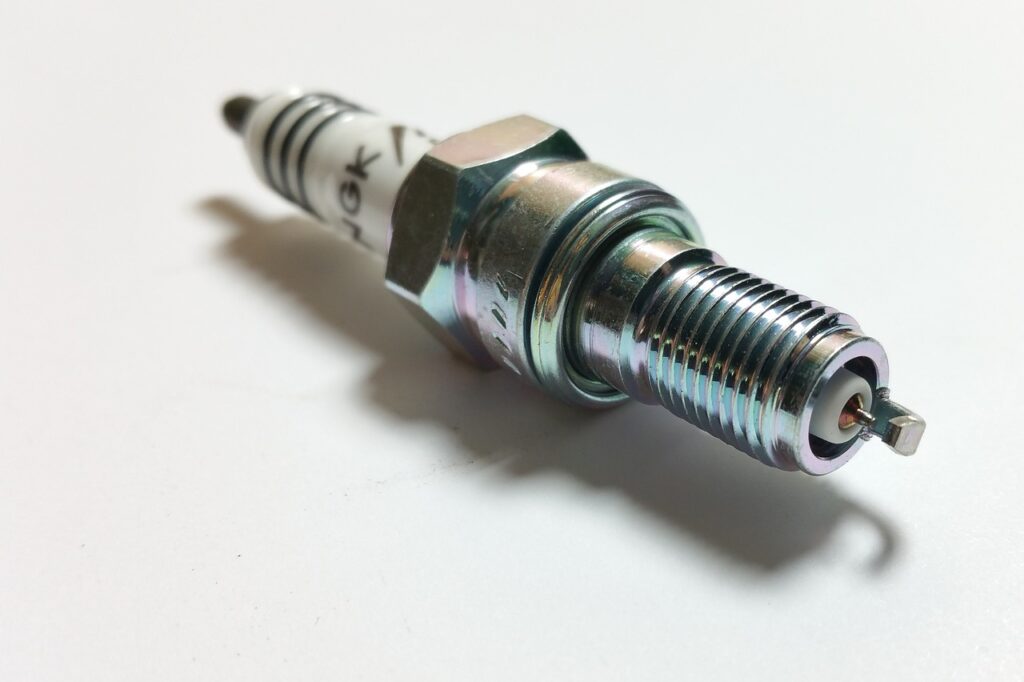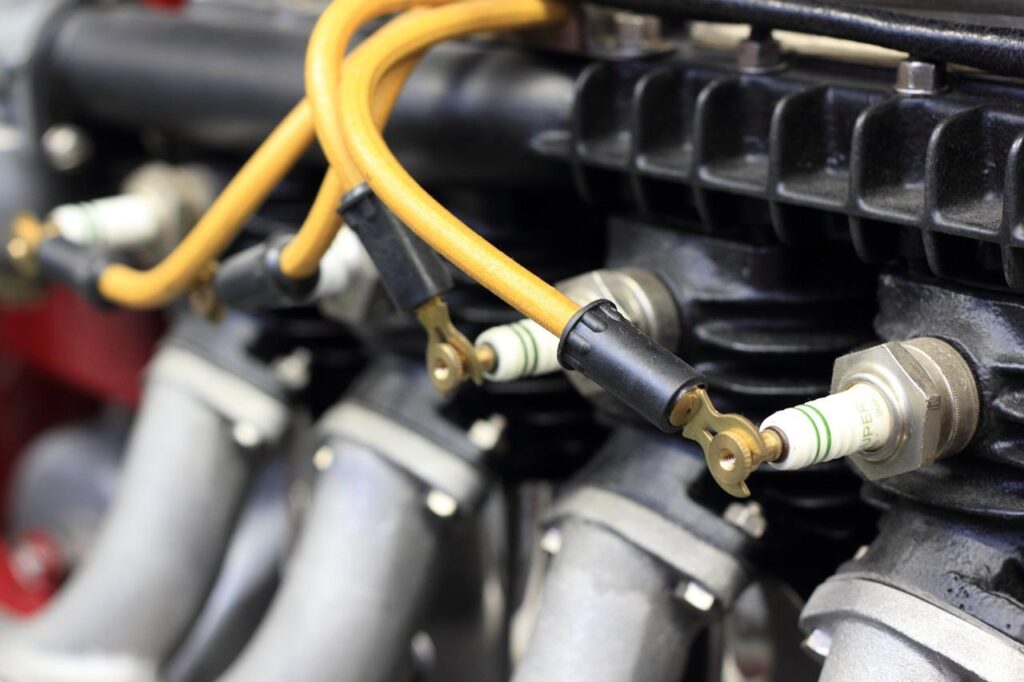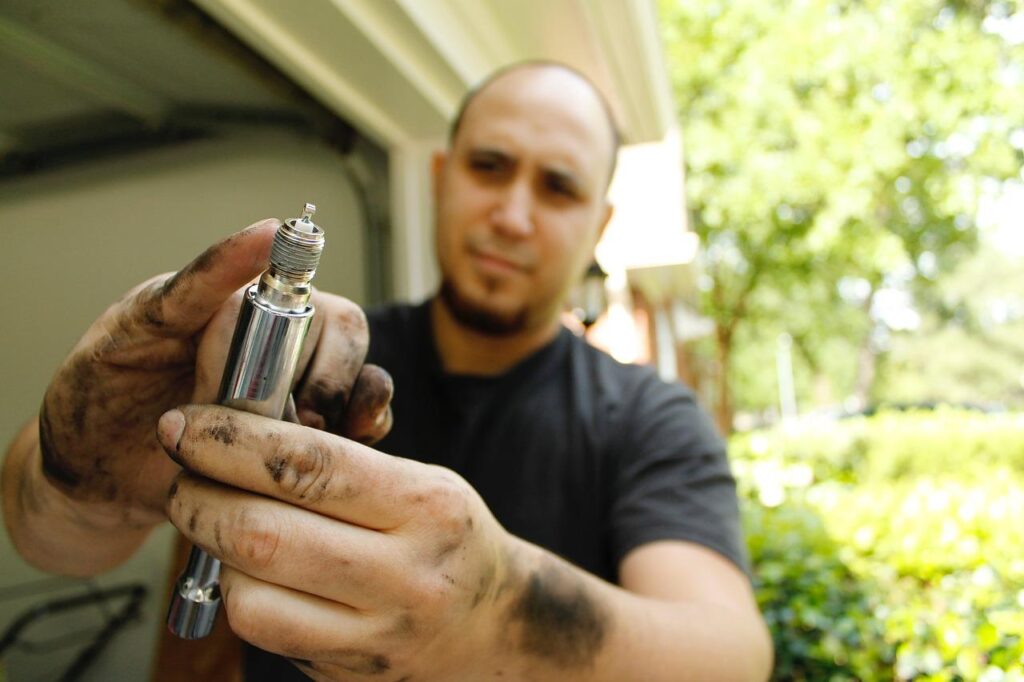Getting stuck on the side of the road somewhere is no fun. What if you are stranded in a car full of people? What should you do? Call a tow truck? How will they know where to find you? It’s time-consuming and stressful figuring out whether you’ll get the best deal on the tow truck company services. Here’s why you should read on to learn more about spark plugs.
With Doug Yates Towing & Recovery, you can rely on our experience and professionalism to assist when you are broken down and need help.

What Are Spark Plugs, And What Do They Do?
Spark plugs are a crucial part of your car’s engine, and they provide the spark that ignites the fuel-air mixture in the cylinder. They’re the essential part of your car’s ignition system, so it’s important to know how to choose the best spark plugs for your vehicle.
What Are Spark Plugs, And What Do They Do?
Spark plugs are small metal devices that fit into the cylinder head of an internal combustion engine. Their primary function is to ignite fuel and air mixtures to create a powerful explosion that turns a piston. This rotation creates power for the engine and propels it forward.
How Spark Plugs Work
The inside of each spark plug has two electrodes — one positive and one negative — that produce an electric spark when activated by an ignition coil or module. The electrodes are housed within an insulator made from ceramic or porcelain material, so they don’t touch any other parts while in operation. The insulator also helps prevent sparking once installed due to its high resistance to heat and electricity.
The ignition coil produces a high voltage between 8,000-12,000 volts at up to 10 amperes (amps) of current flow through its primary winding when activated by the vehicle’s computer system.
What Is The Composition Of A Spark Plug?
Spark plugs are made up of a variety of different components. The most critical element is the tip, which contains an electrode that causes combustion when it touches a metal object called a center electrode (also known as an “electrode gap”). These electrodes are connected to an internal wire that carries electricity from your car’s distributor or coil to the spark plug. The outer casing is usually made from aluminum or steel and can be coated with nickel plating for improved conductivity and corrosion resistance.
When Do You Replace Spark Plugs?
The lifespan of a spark plug varies depending on the type of engine and how much it’s used. Generally speaking, however, most spark plugs will last anywhere between 40,000 and 100,000 miles before you need spark plug replacement. It depends on several factors, including:
- Environmental conditions like dust or moisture from rain or snow can negatively affect performance gradually over time;
- Driving habits such as aggressive driving, which puts additional wear and tear on your vehicle;
- Engine size affects how often you’ll need to replace spark plugs (the larger the engine size, the more often).
What Is A Spark Plug’s Heat Range?
A spark plug’s heat range refers to how hot it gets during use. This value is measured in degrees Celsius and determines how hot or cold the plug can get before failing. The higher the number in this measurement, the hotter the plug will run when under load (in other words, while your car is running).
If you have ever seen an old spark plug after being removed from your engine, you might have noticed that it looks like glass or ceramic. This material isn’t glass or ceramic — instead, it’s made of silicon carbide (SiC), which allows it to withstand extreme temperatures without cracking or breaking apart as traditional metal ones would.
A spark plug’s heat range determines how hot it gets and how much voltage it can handle. The hotter the plug, the more voltage it can handle before melting down. The colder the plug, the less voltage it can handle before melting down.
The heat range is determined by tip temperature and insulator temperature.
- Tip Temperature – The tip temperature is how hot the spark plug tip gets when operating at full power. A hotter tip means more power, while a cooler tip means less power.
- Insulator Temperature – The insulator temperature is how hot the insulator on top of the electrode becomes while operating at full power. A hotter insulator means better heat dissipation and a longer life span, while a cooler insulator means less power and a shorter life span.

What Causes Spark Plugs To Wear Out?
Several things can cause a spark plug to wear out, but the main reason is oil fouling. The oil comes in contact with both the electrode and insulator of a spark plug, and if it gets into the combustion chamber, it can cause misfires that lead to poor performance and reduced gas mileage.
What Are Symptoms Of Worn Out Spark Plugs?
Worn-out spark plugs are a common cause of engine misfires and poor fuel economy. The spark plug is the small metal cylinder that fires the spark in your car’s combustion chamber, and it’s usually located at the top of the engine, near the fuel injectors.
The firing end of your spark plug gets very hot during use, and to survive this heat, it needs to stay cool. The other end of your spark plug is attached to an insulator that keeps it from touching anything else inside your engine. This insulator can get worn down over time and allow the tip of your spark plug to touch other parts of your engine, causing misfires and poor fuel economy.
If you notice any of these symptoms in your vehicle, it may be time for new spark plugs:
- Poor gas mileage
- Engine misfires
- Check Engine Light on or flashing
- Excessive smoke from the exhaust
What Is The Spark Plug Gap?
The gap is the distance between the center and side electrodes in a spark plug. It’s measured in thousandths of an inch (0.001″ or 0.025mm) and is controlled by the manufacturer when manufacturing its product. The gap must be kept within specification to ensure the proper performance of your vehicle. Using a spark plug with an appropriate gap for your car’s specifications is essential.
What Are Different Types Of Spark Plugs?
There are two main types of spark plugs: conventional and iridium. The tip is made from copper or nickel-plated copper in a traditional spark plug. The center electrode is tungsten, but it’s not plated with iridium. The tip of an iridium spark plug is made from pure iridium metal, and it has a layer of platinum on the outside to help prevent corrosion and extend its life. The center electrode is also made from tungsten, but it’s plated with iridium instead of platinum.
Need Roadside Assistance?
We understand how humiliating it is to be stuck on the side of the road on a hot summer afternoon, and it’s no fun, and that’s why we’re always ready to help you out when you need us. Doug Yates Towing and Recovery is located in the city limits of Chattanooga, one of Tennessee’s most vibrant business communities.
Since 1946 it has been the company’s mission to conduct business with integrity and professionalism in all phases of day-to-day services. We offer 24/7 towing and recovery services for all motorists and vehicle types. Our team of tow truck technicians will help get your vehicle wherever it needs to be safely and securely. You can count on us for all your towing & recovery needs. Give us a call today!

